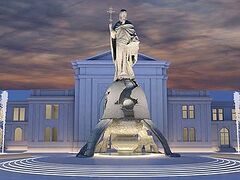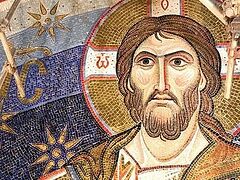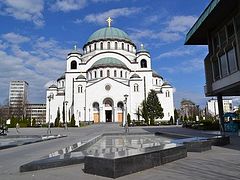Belgrade, September 17, 2020
After more than a century, the construction and beautification work in the Church of St. Sava in Belgrade and around the building are in the final phase.
The church is adorned with beautiful mosaics of Christ the Pantocrator, the Mother of God, and the Nativity of Christ, covering an area of more than 161,000 square feet, making it a unique church in the Orthodox world. The installation of the mosaics was recently completed, reports the Metropolis of Montenegro of the Serbian Orthodox Church.
The mosaics were made with a technique that has been used in Russia for 15 years, which, according to His Grace Bishop Stefan (Šarić) of Remesiana, the rector of St. Sava’s, is better than that used in the most famous Venetian mosaics. By baking glass at high temperatures, an ideal specific color is obtained that is needed for the mosaic and future icons, Vladyka explained.
Special lighting that will fully illuminate the glory of the mosaics is currently being installed.
The main Ascension mosaic in the central dome, made by a collective of Russian artists, was festively unveiled in February 2018.
The current, final stage of the work on the church includes three iconostases, an altar that currently has a floor, and an icon of Jesus Christ with an arm span of more than 55 feet.
There are three altars in the church, the main one being dedicated to St. Sava. The right altar is dedicated to Sts. Ermil and Stratonik, the first Belgrade martyrs, and St. Stefan Lazarević, who made Belgrade the capital.
As glorious as the church is, Bp. Stefan says it is not for the Serbian people to boast, because it was given them by God, and it is St. Sava who deserved such a church in his honor.
It is expected that the interior of the church will be completed next month.
***
Work on the Church of St. Sava has spanned more than 120 years. The date of the beginning of construction is considered to be 1894, though actual construction on the church did not begin until 1935 and was soon interrupted by WWII and the subsequent change of political power in Yugoslavia.
Construction resumed only in 1986. The dome was completed in 1989.
The official opening was held in 2004, though work on the interior continued for the next 16 years.






